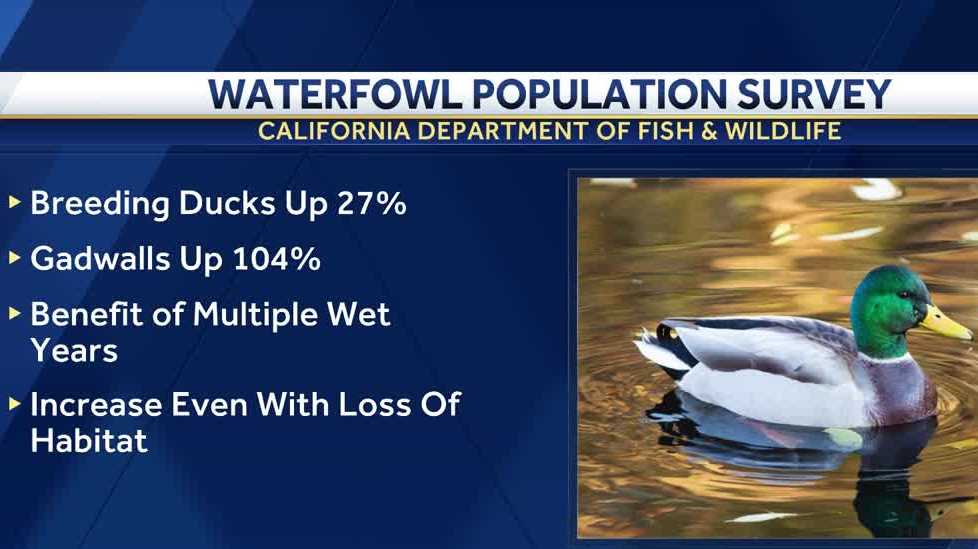Three straight years of wet winters appear to be benefiting water bird species in the state, with some species showing a more than doubling in population since last year, according to the California Department of Fish and Wildlife. Total breeding duck populations in California increased 27%, with mallards increasing 49%. Gadwall numbers are up 104% . “The survey indicated an increase in mallard abundance, and habitat conditions were good in Northern California, so we expect average to above-average production for all waterfowl species,” said CDFW Waterfowl Program Biologist Melanie Weaver.These gains were accomplished with even more development and changes in agriculture to less water bird friendly crops continue to decrease habitat in the state.”This is a testament to farmers, hunters and conservation groups working together to preserve habitat,” said Patrick Kittle, organizer of the 2025 Kittles Outdoor & Sport Co. California State Championship Duck Calling Competition in Colusa Aug. 23-24. “It’s paramount.”For perspective on the loss of habitat statewide, mallards remain below the long-term average by 16%. State wildlife officials have been conducting this survey from the air since 1948.”The population estimates are for those areas where the vast majority of waterfowl nesting occurs in California, including wetland and agricultural areas in northeastern California, throughout the Central Valley, the Suisun Marsh and some coastal valleys,” read a news release.See more coverage of top California stories here | Download our app | Subscribe to our morning newsletter | Find us on YouTube here and subscribe to our channel
Three straight years of wet winters appear to be benefiting water bird species in the state, with some species showing a more than doubling in population since last year, according to the California Department of Fish and Wildlife.
Total breeding duck populations in California increased 27%, with mallards increasing 49%. Gadwall numbers are up 104% .
“The survey indicated an increase in mallard abundance, and habitat conditions were good in Northern California, so we expect average to above-average production for all waterfowl species,” said CDFW Waterfowl Program Biologist Melanie Weaver.
These gains were accomplished with even more development and changes in agriculture to less water bird friendly crops continue to decrease habitat in the state.
“This is a testament to farmers, hunters and conservation groups working together to preserve habitat,” said Patrick Kittle, organizer of the 2025 Kittles Outdoor & Sport Co. California State Championship Duck Calling Competition in Colusa Aug. 23-24. “It’s paramount.”
For perspective on the loss of habitat statewide, mallards remain below the long-term average by 16%.
State wildlife officials have been conducting this survey from the air since 1948.
“The population estimates are for those areas where the vast majority of waterfowl nesting occurs in California, including wetland and agricultural areas in northeastern California, throughout the Central Valley, the Suisun Marsh and some coastal valleys,” read a news release.
See more coverage of top California stories here | Download our app | Subscribe to our morning newsletter | Find us on YouTube here and subscribe to our channel

